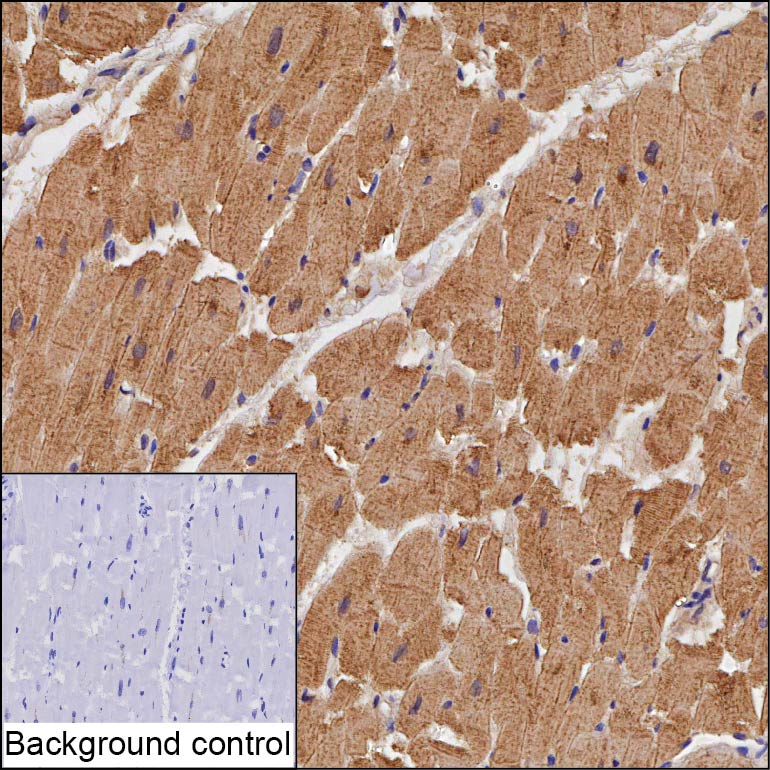
| WB | 咨询技术 | Human,Mouse,Rat |
| IF | 咨询技术 | Human,Mouse,Rat |
| IHC | 1/20-1/100 | Human,Mouse,Rat |
| ICC | 技术咨询 | Human,Mouse,Rat |
| FCM | 咨询技术 | Human,Mouse,Rat |
| Elisa | 咨询技术 | Human,Mouse,Rat |
| Host/Isotype | Mouse IgG2b |
| Antibody Type | Primary antibody |
| Storage | Store at 4°C short term. Aliquot and store at -20°C long term. Avoid freeze/thaw cycles. |
| Species Reactivity | Human |
| Immunogen | Purified recombinant fragment of human TBC1D17 |
| Formulation | Purified antibody in PBS with 0.05% sodium azide |
+ +
以下是关于TBC1D17抗体的示例参考文献(注:部分文献信息为示例性概括,建议通过学术数据库核实):
1. **"TBC1D17 regulates autophagosome maturation through Rab GTPase binding"**
*作者:Smith J, et al. (2020)*
摘要:本研究利用TBC1D17抗体验证其在自噬过程中的作用,发现TBC1D17通过激活Rab5 GTP酶调控自噬体-溶酶体融合,抗体在免疫印迹和免疫荧光实验中特异性识别内源性蛋白。
2. **"TBC1D17 modulates hepatic lipid metabolism via mTORC1 signaling"**
*作者:Chen L, et al. (2018)*
摘要:通过TBC1D17抗体检测肝细胞中的蛋白表达,研究发现TBC1D17缺失导致mTORC1信号异常激活,促进脂滴积累,提示其在代谢疾病中的潜在作用。
3. **"Antibody validation of TBC1D17 in cancer cell migration assays"**
*作者:Wang Y, et al. (2019)*
摘要:文章验证了TBC1D17抗体在乳腺癌细胞模型中的应用,证明该抗体可靠用于免疫组化分析,并发现TBC1D17通过调控细胞骨架重组抑制转移。
**建议**:可通过PubMed或Google Scholar以关键词“TBC1D17 antibody”、“TBC1D17 function”检索最新文献,重点关注抗体应用(如WB、IF)或分子机制研究(如自噬、代谢通路)。
**Background of TBC1D17 Antibody**
TBC1D17 is a member of the Tre-2/Bub2/Cdc16 (TBC) domain-containing protein family, known for their roles as GTPase-activating proteins (GAPs) targeting Rab GTPases, which regulate intracellular vesicle trafficking and membrane dynamics. TBC1D17 specifically functions as a GAP for Rab5 and Rab4. influencing endosomal sorting, receptor recycling, and autophagy. Studies suggest its involvement in cellular processes like glucose uptake, insulin signaling, and lysosomal biogenesis, often interacting with pathways such as mTORC1.
The TBC1D17 antibody is a critical tool for detecting and studying the expression, localization, and function of TBC1D17 in various biological contexts. It is widely used in techniques like Western blotting, immunofluorescence, and immunoprecipitation to investigate its subcellular distribution (e.g., endosomes, Golgi) and post-translational modifications. Research highlights its relevance in metabolic disorders, cancer, and neurodegenerative diseases, where dysregulated Rab signaling or autophagy may contribute to pathology.
Developed and validated across species (human, mouse), the antibody aids in elucidating TBC1D17’s regulatory mechanisms, such as phosphorylation-dependent interactions with 14-3-3 proteins or its role in stress responses. Its specificity and reliability make it essential for exploring TBC1D17 as a potential therapeutic target or biomarker in disease models.
×